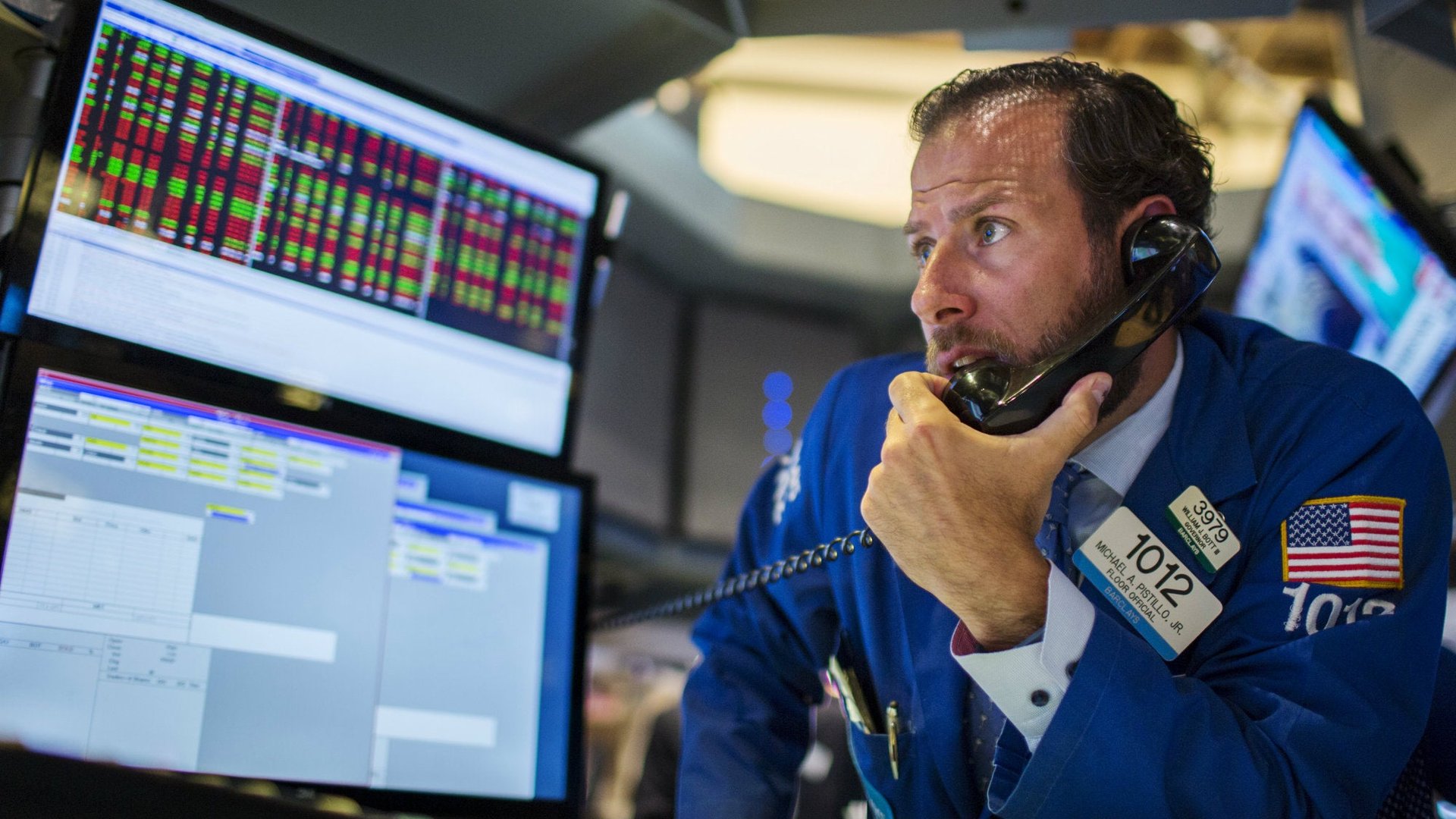The markets are soaring, so why are investors so worried?
Financial markets are on a tear. All three major US stock indexes set new all-time highs (paywall) on the same day last week, and UK equities aren’t far off record levels, either. Bonds have rallied so much that governments and companies can borrow for next to nothing—in some cases, they are even being paid to borrow. Investors are piling in to emerging-market assets and exchange-traded funds. Gold, a traditional hedge against market turmoil, is up nearly 30% in price this year.


Financial markets are on a tear. All three major US stock indexes set new all-time highs (paywall) on the same day last week, and UK equities aren’t far off record levels, either. Bonds have rallied so much that governments and companies can borrow for next to nothing—in some cases, they are even being paid to borrow. Investors are piling in to emerging-market assets and exchange-traded funds. Gold, a traditional hedge against market turmoil, is up nearly 30% in price this year.
It looks too good to be true. In some respects, that’s because it is. Central banks are pumping markets with $200 billion of stimulus a month—an unprecedented amount—which is creating a tide of liquidity that is lifting all asset classes.
When everything goes up, it’s good for investors, right? Not really.
Azad Zangana, an economist at UK asset manager Schroders, says that central banks’ aggressive “quantitative easing” (stimulus via bond buying) alters the fundamental principle of investing: diversification. The “liquidity pulse” driving the markets has made the usual correlation between risky and conservative assets—one goes up when the other goes down—”very blurred,” he notes.
Awash in liquidity, investors are finding it hard to judge the underlying economic fundamentals. The IMF has regularly downgraded its global growth forecasts; Britain’s decision to quit the European Union is hammering its economy and giving the rest of Europe the jitters; a question mark still hangs over the impact of China rebalancing its economy; inflation barely exists in developed nations while developing countries are trying to restrain runway price growth.
The US economy is a noteworthy bright spot. Even so, this growth hasn’t been enough to convince the Federal Reserve to raise interest rates again, so it has essentially kept its foot on the monetary accelerator, setting the tone for the rest of the world.
David Page, an economist at Axa Investment Managers, warns that there is the possibility of a “material slowdown” in the US economy in the next couple of years. Fund managers at the firm are “underweight” equities globally, considering the market too expensive. They are also “neutral” on government bonds and only slightly more enthusiastic about corporate debt, which has been targeted by stimulus programs recently unveiled by the European Central Bank and Bank of England.
“Clearly there is only so much global investors can hold in the credit space,” Page says. “It’s a very challenging environment to invest, you’re certainly not looking at strong returns.”
So what is an investor to do? At Jupiter Asset Management, Stephen Mitchell is focusing on niche areas within stock markets that are untethered to wider economic fundamentals. This means hunting for innovation, which he sees in pharmaceutical companies, medical equipment, cloud technologies, and connected machines.
Quantitative easing has pushed up asset prices but not corporate earnings, Mitchell notes. As a result, monetary policy is “beginning to look pretty maxed out,” he says. “I think we are in the final stages of monetary stimulus and you are getting a lot more talk about fiscal stimulus.”
This touches on the debate dominating financial markets. The Bank of Japan disappointed investors last month when it didn’t expand its quantitative-easing program, suggesting that monetary stimulus may have finally reached its limits. Prime minster Shinzo Abe’s cabinet stepped in a few days later to announce extra fiscal spending, but this too failed to impress anxious investors.
With the candor that comes from someone about to retire, the outgoing governor of Australia’s central bank recently warned about the dangerous addiction to monetary stimulus in global markets. “We can’t just assume that monetary policy can simply dial up the growth we need. We need some realism here,” Glen Stevens said in a speech last week. He added, ominously:
I have serious reservations about the extent of reliance on monetary policy around the world. It isn’t that the central banks were wrong to do what they could, it is that what they could do was not enough, and never could be enough, fully to restore demand after a period of recession associated with a very substantial debt build-up.
Despite these concerns, nobody expects central banks to get much stingier any time soon, and so the rally in stocks and bonds continues. The risk of a market correction rises by the day, but traders don’t have a lot of alternatives. If global growth chugs along at a steady but low rate, as it has recently, only some big and unforeseen event could knock the markets off course. Americans go to the polls in November to elect their next president.